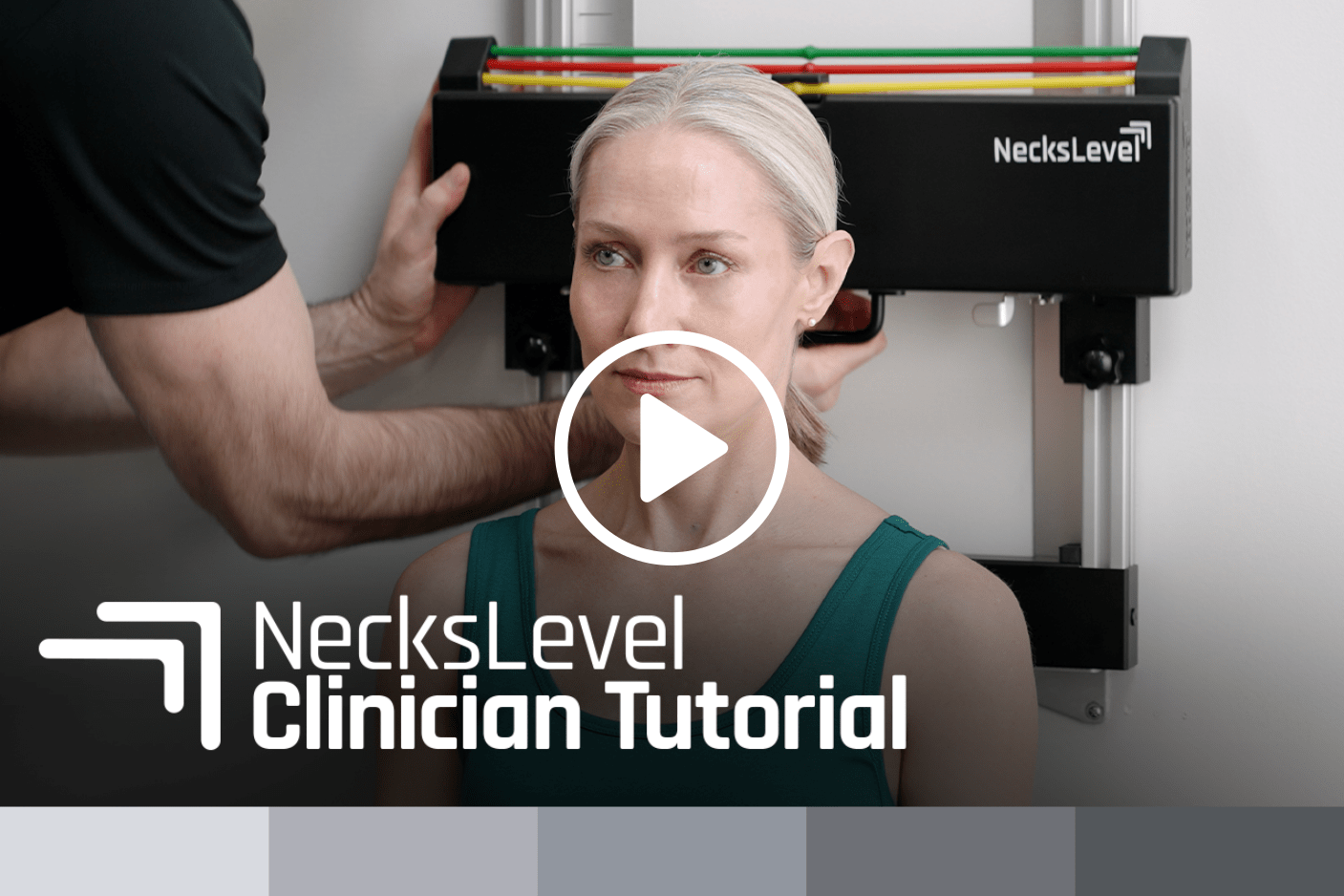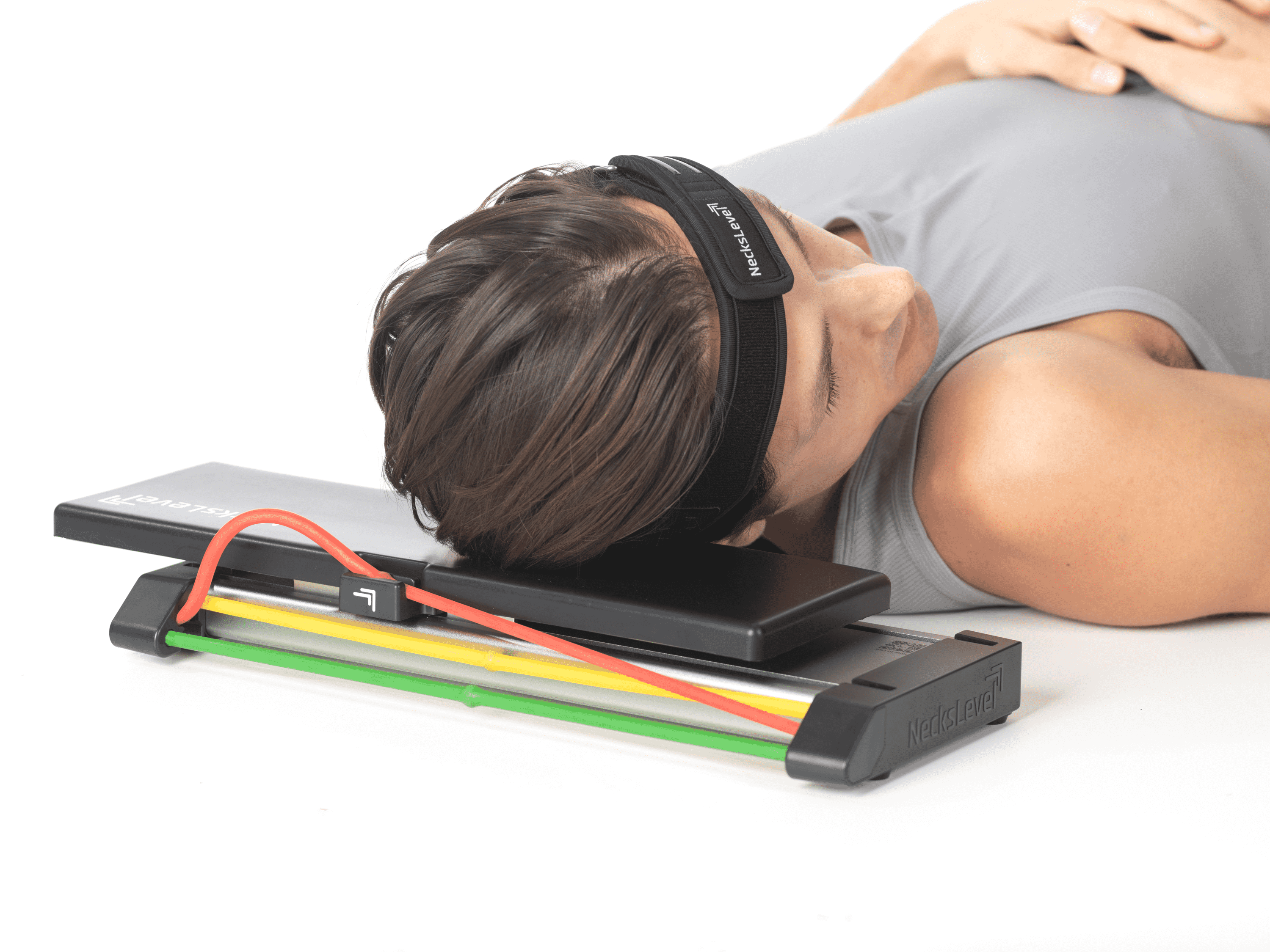Ergonomic Desk Setup for Neck Pain Relief | Optimize Your Workspace

Long hours spent at a desk can take a toll on your neck health and posture. Often, the underlying issue isn’t just the long hours, it’s how your desk is set up.
That’s where ergonomics comes in. Ergonomics is the science of designing a workspace to fit your body’s natural alignment, reducing strain and preventing discomfort. By creating an “ergonomic” desk setup, you can minimize neck pain, enhance your posture, and even boost your productivity.
To help you feel confident that your workstation is perfectly optimized for your needs, we’ve custom-made a step-by-step guide tailored to align your chair, desk, and computer with your body’s natural posture. These simple adjustments can make a big difference in keeping neck pain at bay and ensuring your workspace works for you, not against you.
Follow the steps below to make sure your space fits your body:
Step 1: Adjust Your Chair Height
Start with your chair. Ensure your elbows are at the same level as your desk surface when your arms are relaxed at your sides. This small adjustment minimizes stress on your neck and shoulders by allowing your arms to rest naturally.
Pro tip: Sit upright while making this adjustment for accuracy.

Step 2: Put the Top of your Monitor at Eye Level
Position the top of your monitor at eye level. If necessary, use a monitor stand or stack books to raise it. This prevents you from tilting your head forward or down, which can further strain your neck muscles.

Step 3: Keep an Arm’s Length Between You and Your Monitor
Your monitor should be about an arm's length away. Sit up straight, extend your arm, and place your screen at that distance. This keeps your eyes comfortable and reduces unnecessary head movement.

Step 4: Arrange Multiple Monitors Properly
If you use more than one monitor, position your primary screen directly in front of you. Place secondary screens directly to the side of your primary screen to reduce head rotation. Remember to turn your chair, not your head, when switching between screens.

Step 5: Have your Legs in the 90-90 Position
Sit with your hips, knees, and ankles forming 90-degree angles. If your feet don’t reach the floor, use a footrest to provide support. Proper leg alignment supports your posture and helps reduce strain on your spine.

Step 6: Optimize Your Laptop Setup
For laptop users, consider a laptop stand paired with a wireless keyboard and mouse. This elevates your screen to eye level, helping you maintain proper head and neck alignment.

Why Ergonomics Matter for Your Neck
Your head weighs about 15 pounds, and your neck is responsible for holding up your head all day long. When you slouch or lean forward, the strain on your neck increases exponentially. Over time, this can lead to pain, stiffness, and even chronic issues. This is also why it is important to strengthen your neck muscles.
An easy way to incorporate neck strengthening into your day is by using a device like the NecksLevel Glide during breaks or lunchtime. Performing a few simple exercises can help relieve tension, improve posture, and prevent pain from building up.
It’s a quick and effective way to support your neck and stay proactive about your health. Here are a few quick exercises you can do:
NecksLevel Rehab Protocol: 5-Min Neck Pain Relief Quick Stretches & Exercises! | NecksLevel
The Role of Posture

Good posture starts from your hips and pelvis and extends upward.
Here's how you can maintain it:
Use a rolled towel or lumbar roll to keep your pelvis slightly tilted forward.
Gently pull your shoulder blades back to relieve tension in your upper neck muscles.
Keep your head centered over your spine to minimize stress on your neck.
Four Quick Desk Exercises to Relieve Neck Pain
Even with an ideal desk setup, movement is key. Incorporate these simple exercises into your workday:
Perform 10–20 reps of each exercise while working a few times a day.
1. Backward Shoulder Rolls
Backward shoulder rolls help loosen up tension in your upper back and shoulders.
Sit tall with feet flat on the ground and hands on thighs.
Inhale deeply; exhale while rolling shoulders backward in a circular motion.
Lift shoulders toward ears, then roll them back and down.
2. No Moneys
No moneys help open the chest and counteract slouching for better posture.
Sit tall with feet flat and arms extended to the sides at shoulder height, palms down.
Rotate arms backward, squeezing shoulder blades together as if making a "no" gesture.
Hold and feel the stretch across your chest and shoulders.
3. Chin Tucks
Chin tucks improve your head and neck alignment while reducing strain.
Sit comfortably with a straight back and relaxed shoulders.
Extend your neck forward slightly, creating a gentle stretch in the back of your neck.
Nod your head gently as if saying “yes,” engaging front neck muscles and stretching the back.
Hold for 5-10 seconds, then relax.
4. Neck Side Stretch
This exercise can help release tension in your upper trapezius muscles.
Sit up straight, keeping shoulders relaxed.
Tilt your head to one side, bringing ear toward shoulder, feeling a stretch on the opposite side.
Hold for 15-20 seconds, breathing deeply, then switch sides.
Watch Our Full Guide
For a step-by-step walkthrough, check out our above YouTube video covering workspace setup and exercises.
Final Thoughts
Setting up an ergonomic workspace isn’t just about comfort, it’s about investing in your health and productivity. By following these steps and incorporating regular movement into your day, you can reduce neck pain and make work less taxing on your body.
FAQs - Desk Setup for Neck Pain
What is ergonomics, and why is it important for neck health?
Ergonomics is the science of designing workspaces to fit the body's natural alignment. An ergonomic setup reduces strain on your neck and shoulders, preventing discomfort and promoting better posture, which is essential for long hours spent at a desk.
Can an ergonomic desk setup really improve productivity?
Yes! A well-optimized workspace can enhance comfort and reduce pain, allowing you to focus better on your tasks. When you're not distracted by discomfort, your productivity can significantly increase.
How often should I take breaks from my desk to prevent neck pain?
It's recommended to take a break every 30 to 60 minutes. Use this time to stand, stretch, or perform quick exercises to relieve tension and improve circulation.
What if I experience neck pain even with an ergonomic setup?
If you still experience neck pain, it may be helpful to consult a healthcare professional. They can assess your situation and provide tailored advice or treatment options.
Are there specific tools or devices that can help with neck pain?
Yes, tools like the NecksLevel Glide can aid in strengthening and stretching neck muscles. Additionally, using a good quality chair with lumbar support and a monitor stand can enhance your ergonomic setup.
What are some signs that my workspace is not ergonomic?
Signs include neck pain, shoulder stiffness, headaches, and fatigue. If you frequently adjust your posture or feel discomfort after long hours at your desk, it may indicate a need for ergonomic adjustments.
Written by:

Dr. Niya Gray, DPT, LSVT BIG
Physical Therapist
Niya is a Physical Therapist and Marketing Manager with a passion for health solutions and patient outcomes, focused on bridging the gap in access, quality, and innovation in healthcare. With a keen interest in the digital space, she seeks to drive healthcare forward by leveraging technology, creative advancements, and digital platforms to enhance patient care and improve healthcare accessibility.
NecksLevel Glide
"Like having a Physical Therapist in your home"
Professional neck strengthening and stretching in one compact device. Relieve neck pain while reducing neck stiffness & improving your posture.
Shop Now

Related Resources:








